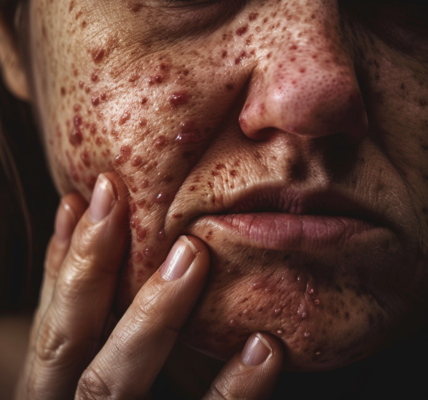If you suffer from spring allergies, you already know you tend to feel miserable once pollen season descends. But did you know that allergies can affect many different systems within your body – and that they’re all interconnected?
Spring allergens such as pollen, mold spores and other airborne particles not only trigger nasal allergies, but also can have a profound effect on a variety of allergic conditions including asthma and eczema. Understanding how all the allergic responses are interconnected is crucial for effectively managing and improving the overall quality of life for people who are affected.
Nasal allergies: The image that pops to mind when you hear “spring allergies” is someone sneezing and blowing their nose. Inhaled pollen can trigger an allergic reaction in susceptible people, leading to symptoms like sneezing, itching and nasal congestion. Nasal allergies are commonly referred to as “hay fever” although there is no connection to either hay or fever. The impact of these allergies isn’t limited to the respiratory tract.
Asthma flares: For people with asthma, exposure to spring allergens can make their symptoms much worse. Pollen and other airborne allergens can irritate the airways, leading to a rapid tightening of the airways and increased inflammation over time. This aggravation can result in wheezing, coughing, and/or difficulty breathing. The link between nasal allergies and asthma, sometimes known as the “allergic march,” shows the progression in some individuals.
Eczema: Beyond the respiratory system, spring allergens and warmer temperatures can also impact the skin. Eczema, a chronic inflammatory skin condition, may worsen during the spring months. Pollen and other environmental allergens can trigger flare-ups in individuals with sensitive skin. The connection between environmental allergies and skin conditions emphasizes the need for a comprehensive approach to managing allergic diseases.
Eye allergies: Seasonal allergic conjunctivitis (SAC) is by far the most common type of eye allergy. Patients can experience symptoms in spring, summer and/or fall, depending on the type of plant pollens in the air. Typical symptoms include itching, redness, burning and clear, watery discharge. People with SAC may have chronic dark circles (known as allergic shiners) under their eyes. The eyelids may be puffy, and bright lights may be bothersome. SAC symptoms often accompany the runny nose, sneezing, and nasal congestion associated with hay fever.





